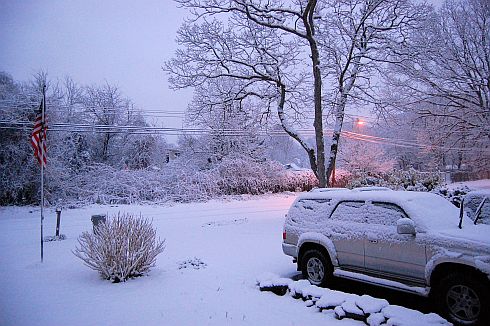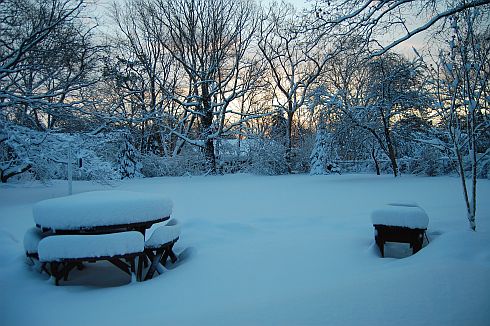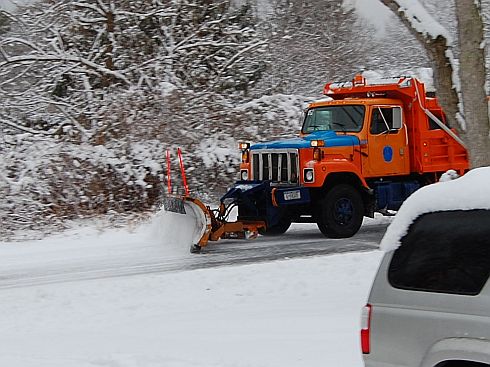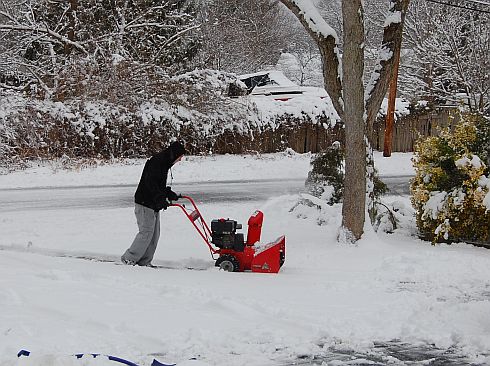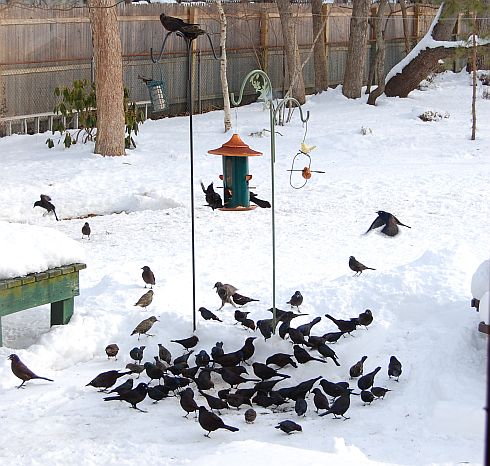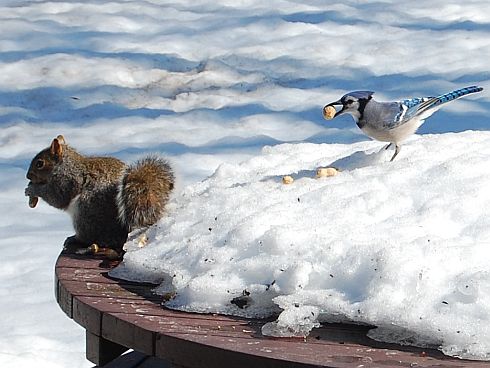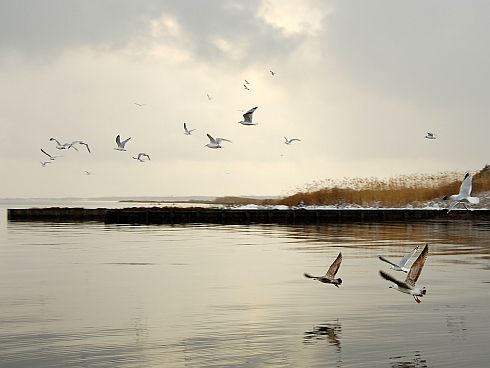I love the Great South Bay. Not only is it a source of fun and fish (Bay Scallops, Dogfish), but if you hang out here on a regular basis you can observe some pretty interesting natural phenomena too.
A while back I posted about temperature inversions and sun pillars, and this morning I saw a naturally occurring low pass filter on the water’s surface.
Most folks wouldn’t have noticed, or cared even if they did notice, but as an engineer I find things like this fascinating. So what is a low pass filter and what’s it doing on the bay?
Okay, it’s simple. Think about when you talk to someone through a door. Their voice sounds muffled because the door blocks the high notes (high frequency sounds) and only lets the low notes (low frequency sounds) through. Because the door only passes low frequency sounds it’s acting as a low pass filter.
In music low pass filters are used to reduce hiss in recordings. In your car the shock/spring assembly at each wheel act as low pass filters to smooth out all the small bumps in the roadway.
Back to the bay… The wind had blown a lot of slush into a small cove near the Long Island Maritime Museum. In the pictures below you’ll notice that the slush is wavy, but has no ripples on its surface.
The slush, being thicker than water, can’t move as fast as water does. It’ll let long, slow waves pass through it, but doesn’t move fast enough for small, closely spaced waves. So instead of rippling like the water’s surface the slush gently undulates as waves pass through it. In effect, the slush is a low pass filter preventing high frequency waves from reaching the shore.
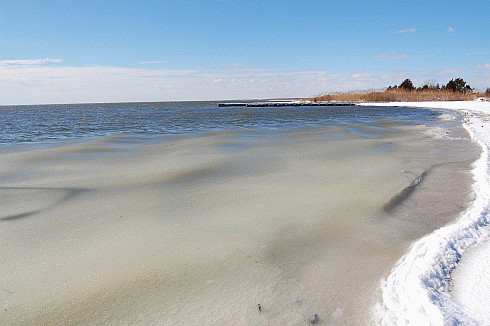
Only ripple free waves reach shoreline.
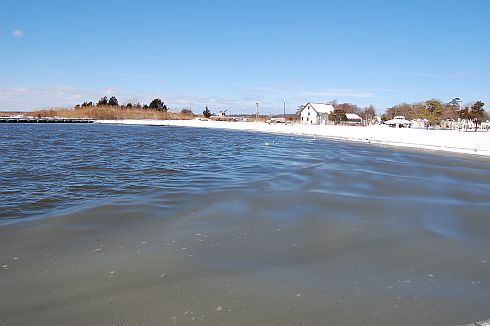
Ripples are gone as soon as they hit the slush. 3 to 4 smooth waves are clearly visible toward the center right. (Click for large.)
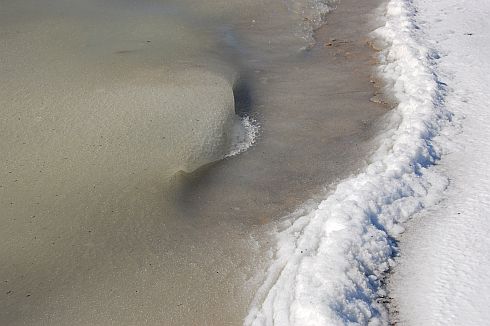
Ripple free wave crashing on shore. (click for large.)
And there you have it. What a beautiful winter scene looks like through the eyes of an engineer. Oh, and Happy Valentine’s Day.
